The Western Sydney Aerotropolis, a multi-billion-dollar development to complement the upcoming Western Sydney Airport at Badgerys Creek, is beginning to take shape.
The new city, surrounding the under-construction Nancy-Bird Walton Airport, will include commercial, agricultural, industrial and residential development and is targeting tech-centric aerospace and defence companies as well as advanced manufacturers and agribusinesses.
The site has been divided into ten precincts, with three key precincts—the Aerotropolis Core, Northern Gateway and South Creek—identified by the government as offering the greatest growth potential.
During the coming decades, residents and workers in Western Sydney will benefit from easy access to strong local and international connections and a 24-hour economy centred around the new airport.
The NSW government has forecast development at the 11,200-hectare greenfield site will drive the creation of 200,000 jobs across the wider Western Parkland City and provide industry-led education opportunities for tens of thousands of students.
The Western Sydney Aerotropolis in numbers
• 11,200 hectares underpinned by a 20-year agreement
• Six initial precincts to be developed during the coming years
• Four additional precincts to be rezoned
• 12.2 million visitors expected annually
• 200,000 new jobs projected
• Predicted to become Australia’s third-largest economy by 2036
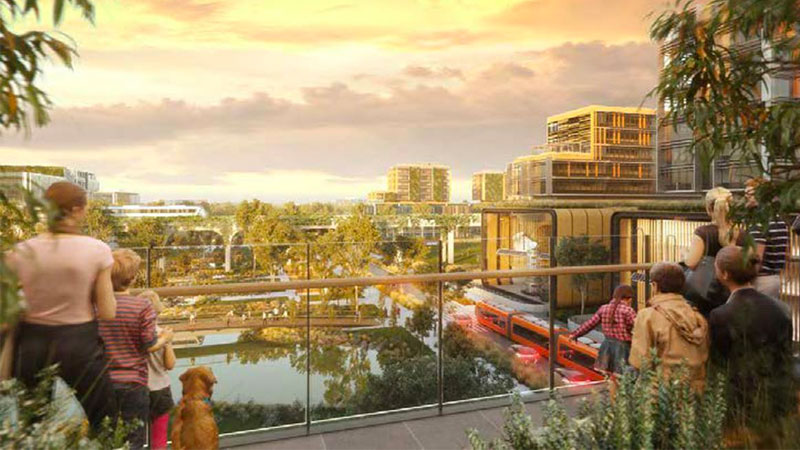
The Western Sydney City Deal
The Western Sydney City Deal, which set out the infrastructure requirements and socio-economic objectives of Badgerys Creek, was agreed in March 2018 between the federal and state governments and eight local government areas spanning outer western Sydney.
The deal aimed to realise a range of objectives, for which the airport is viewed as the catalyst. Chief among these targets is the commitment to deliver 200,000 knowledge-based jobs by 2038.
The plan outlaid investment of $5.3 billion for the new Western Sydney airport, $3.6 billon on the road network, $2.5 billion on hospital upgrades and an unspecified investment in railway infrastructure (starting with a $50 million business case process).
The deal also outlined new transport infrastructure that will connect the airport and Aerotropolis to the broader Sydney network—including the Western Sydney Metro, which was recently green-lit.
A commitment to create an aerospace institute was then altered to be a STEM university and, subsequently, a “multiversity” higher education campus.
Nancy-Bird Walton Airport
Construction of Western Sydney International Airport is under way and on track to begin operations in 2026.
The Australian government is investing up to $5.3 billion in equity to deliver the airport through the government-owned Western Sydney Airport company.
The $5.3 billion full-service airport, designed by London-based Zaha Hadid and Australian firm Cox, will operate curfew-free, delivering international, domestic and freight services.
The airport will feature greenery inspired by local flora unique to Western Sydney with vertical gardens, timber ceilings, shops, restaurants and entertaining spaces.
Stage one will include a 3.7-kilometre runway and facilities for up to 10 million passengers annually.
Further stages will aim to accommodate a projected 82 million passengers a year by 2060.
Construction on the terminal is scheduled to start in 2022.
Timeline
2014 — Federal government announces Western Sydney Airport location
2016 — Federal government releases final Environmental Impact Statement, estimating population of Western Parkland City to be 1,070,000
2017 — Western Sydney Airport Corporation established
2018 — Western Sydney City Deal signed by eight local councils and both federal and state governments; first earthworks start on site
2019 — Sydney Metro Northwest completed, featuring eight new rail stations
2019 — Western Sydney Development Authority established
2020 — Call for expressions of interest for the development of a global university campus as anchor tenant of the Aerospace Institute
2023 — Early Aerotropolis sites available for development with commencement subject to investor and government alignment
2025 — Site decontamination, bulk earthworks and airside civil works completed for the airport
2026 — Western Sydney Airport (domestic and international) commences operations
2031 — Ten million annual passengers forecast for Western Sydney Airport
2036 — Estimated population of Western Parkland City: 1.5 million, 184,500 new dwellings, 200,000 new jobs.
Construction
Construction giant Lendlease and joint venture partner CPB Contractors are currently undertaking the major earthworks contract, valued at $644 million, for the development of the Western Sydney airport at Badgerys Creek.
Since stage one of construction commenced in 2018, around a million worker hours have been clocked up on the site, with 1.8 million cubic metres of earth already moved.
Initial earthworks also involved realigning 1.6 kilometres of Badgerys Creek Road, which will become one of the gateways to the airport when it opens in 2026.
Works on the site—located around 44 kilometres west of the Sydney CBD—will involve hundreds of workers and more than 200 scrapers, excavators, graders, dump trucks and dozers.
The scale of the earthworks equate to more than 10,000 Olympic swimming pools’ worth of earth being moved over the site with a 12-storey difference in height from top to bottom.
Pre-commitments
To date 18 memorandums of understanding have been signed with the Aerotropolis’ foundation partners.
The precinct has so far signed up a $50 million investment from defence contractor Northrop Grumman, and commitments from Japanese manufacturer Mitsubishi Heavy Industries and bank Sumitomo Mitsui Financial Group.
ASX-listed property developer Boyuan Holdings Limited has sounded out plans for a 344-hectare site, dubbed Northern Gateway, set to include integrated health, education, retail, entertainment and leisure precincts and hi-tech logistics clusters.
Westfield owner Scentre Group has plans to integrate a vibrant, highly-activated 200,000sq m mixed-use town centre into the city’s masterplan.
An industry-aligned “multiversity” will be led by UNSW, involving the universities of Newcastle, Wollongong and Western Sydney.
Following recent rezoning approval, listed developer Mirvac will now press ahead with plans for a 56-hectare industrial estate located within the Mamre Road precinct, to be known as Aspect Industrial Estate.
Initial precincts
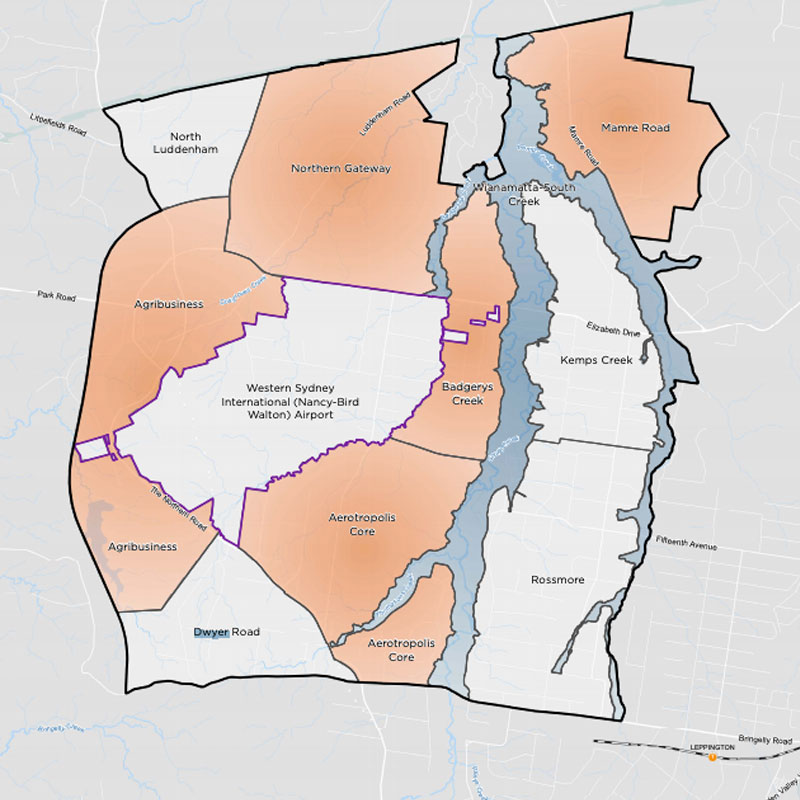
Six of the Aerotropolis’ ten precincts will be rezoned shortly, paving the way for the delivery of new investment and infrastructure in the region.
Rezoning will be implemented through a planning framework that includes a new Aerotropolis State Environmental Planning Policy (SEPP) and Development Control Plan (DCP).
Planning for the Agribusiness, Badgerys Creek and Mamre Road precincts was recently brought forward “to help create early employment opportunities and better co-ordinate infrastructure planning”.
Landowners and developers will be able to apply to accelerate the rezoning of a precinct if the proposal meets the strategic planning requirements set out by the Western City District Plan.
Hitachi, one of the world’s largest companies operating across energy, construction, water and railway systems to defence, digital systems and healthcare technology, will also lend its expertise to the NSW government.
In conjunction with the state government and eight municipalities in the Western Sydney region, Hitachi will oversee the state-of-the-art precinct design and social infrastructure services.
Aerotropolis Core
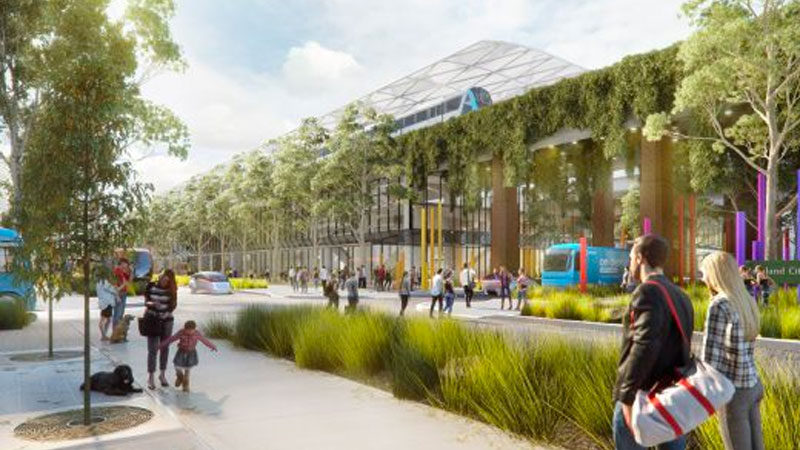
The Aerotropolis Core will be the CBD of Sydney’s third city. It will be a place for workers, residents and visitors.
The industry focus will be on advanced manufacturing, research and industry-led education.
There will also be opportunities for retail, hospitality, cultural facilities and plenty of open space.
Key facts:
• 1,382 hectares
• Potential jobs: 50,000–60,000
• Potential residents: 20,000–24,000.
Agribusiness
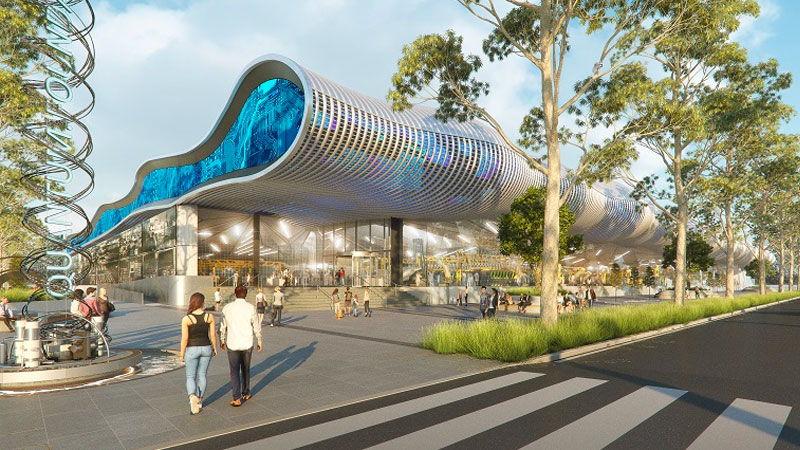
The Agribusiness Precinct will produce fresh food in climate-controlled greenhouses.
The precinct will take advantage of the neighbouring airport and is touted as having the ability to get food from a Western Sydney paddock to a plate on the other side of the world in just 36 hours.
There will also be opportunities to create value-added products such as pre-prepared meals and flowers.
Key facts:
• 1,572 hectares
• Potential jobs: 8,000–10,000
• Potential residents: Minimal, subject to detailed precinct planning.
Badgerys Creek
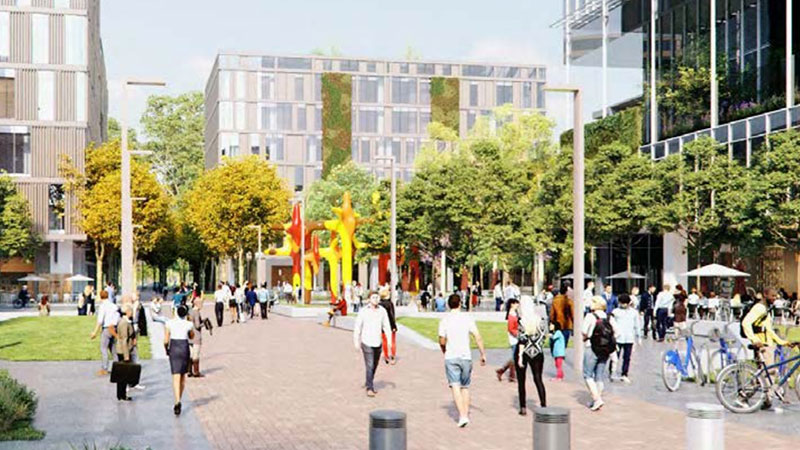
The precinct will adjoin the airport and support airport operations and development, resource recovery and retail.
Because of its proximity to the airport, Badgerys Creek will be unsuitable for noise-sensitive purposes such as schools and hospitals.
Key facts:
• 612 hectares
• Potential jobs: 9,000–11,000
• Potential residents: No additional dwellings.
Mamre Road
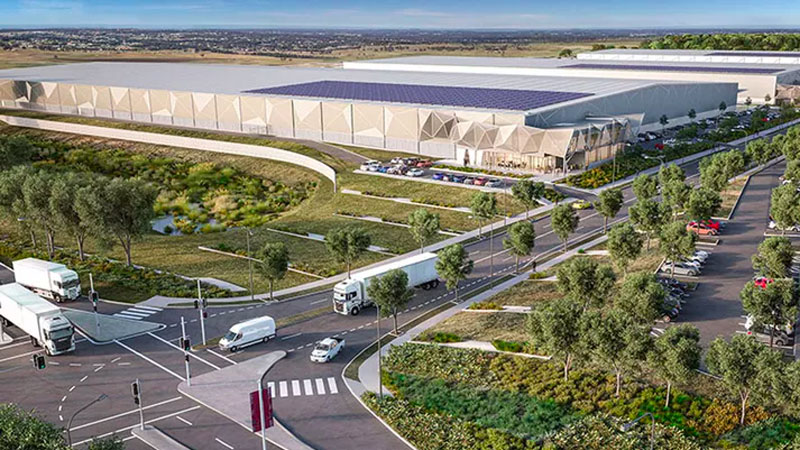
The NSW government recently approved the rezoning of a new Mamre Road industrial precinct, valued at $2.6 billion.
This area will be connected to the potential Western Sydney Freight Line but because of noise will also be unsuitable for schools and hospitals.
Potential land uses include warehousing, logistics, manufacture and circular economy operations.
Key facts:
• 1,002 hectares
• Proposed zoning: To be determined by the WSEA SEPP
• Potential jobs: 17,000
• Potential residents: No additional dwellings.
Northern Gateway
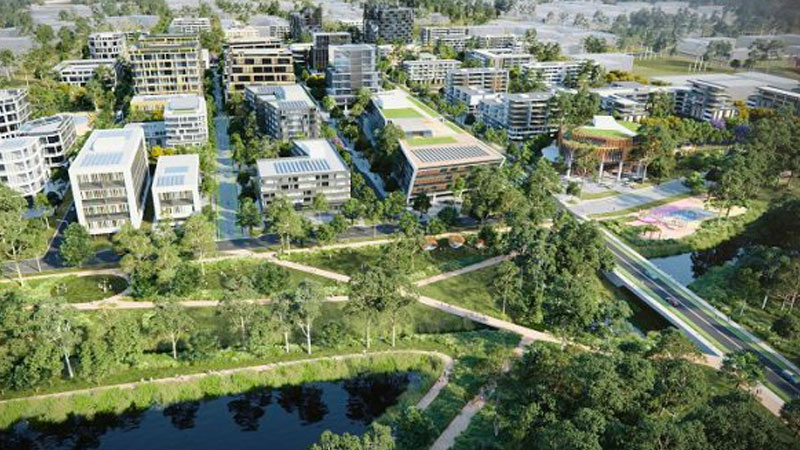
The Northern Gateway will be the entry and exit to the airport. It will include several key transport links, such as the M12 and Metro Greater West.
Due to its proximity to the airport, the precinct will house warehousing and logistics, tourism facilities and visitor accommodation.
There will also be some medium-density housing within walking distance of public transport.
Key facts:
• 1,616 hectares
• Potential jobs: 19,000–21,000
• Potential residents: 8,000–10,000.
Wianamatta–South Creek
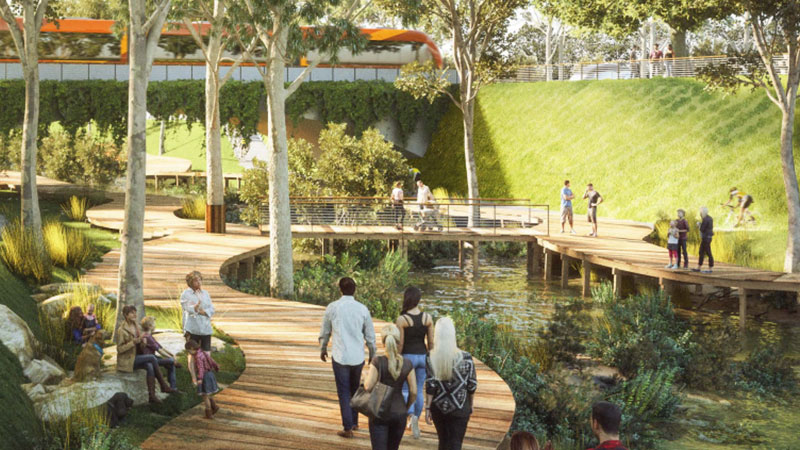
The 1,950-hectare Wianamatta-South Creek is envisaged as a shaded lifestyle feature used for water management and environmental protection.
The precinct will primarily deliver public space, restaurants and cafes and community facilities, with limited residential development due to aircraft noise and flooding.
Key facts:
• 1,392 hectares
• Potential jobs: Minimal
• Potential residents: No additional dwellings.
Remaining precincts
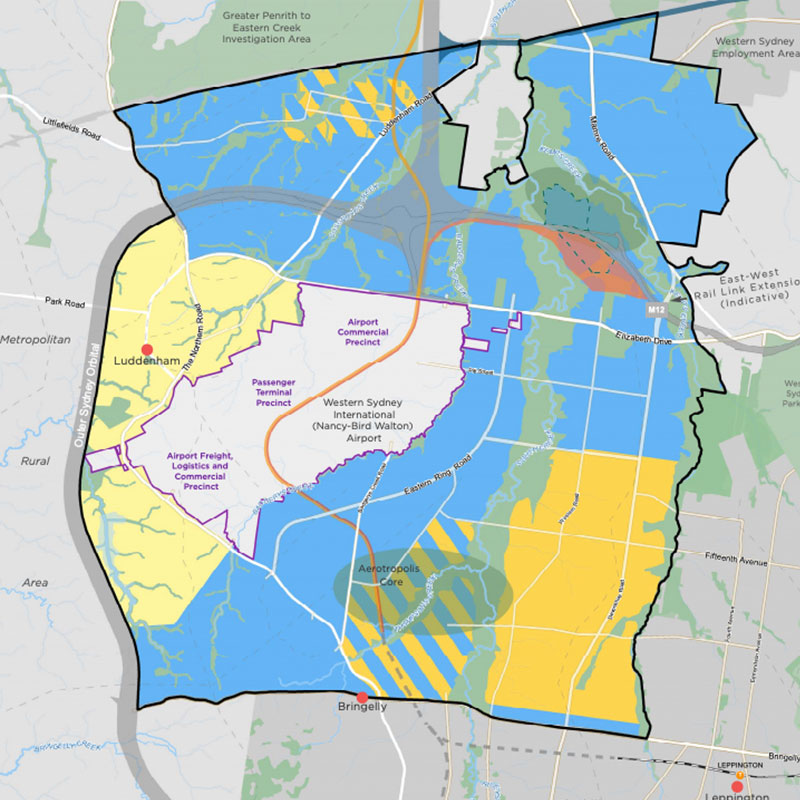
The Aerotropolis Planning Authority has outlined additional precincts, planning for which will continue to be informed based on a series of market and industry studies against their geographic and locational characteristics.
The timing of detailed planning for the non-initial precincts will depend on a range of factors, including market demand and the timing of the delivery of infrastructure and services to the Aerotropolis.
Dwyer Road
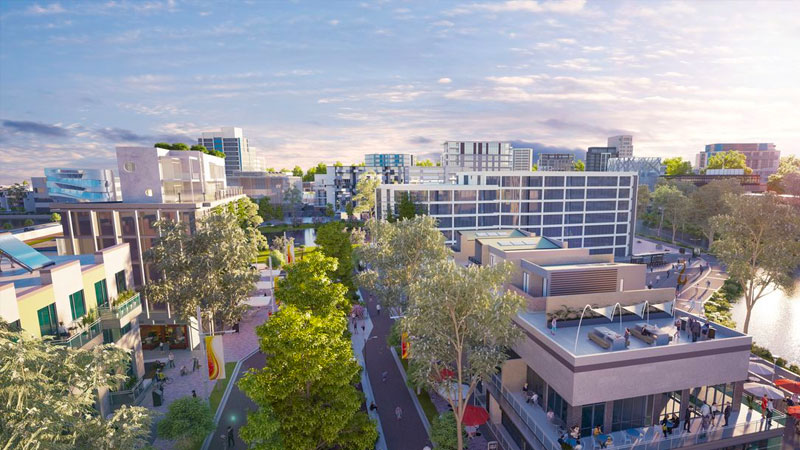
The Dwyer Road Precinct is comprised of 748 hectares of land that was formerly located in the south of the Agribusiness Precinct.
The precinct is a non-initial precinct, which will support broader employment opportunities in the future.
Desired land uses:
• High technology industry, commercial offices, small and medium enterprises, urban services, warehousing and logistics, food technology and research, food production and processing, agribusiness and fresh food produce markets.
Kemps Creek
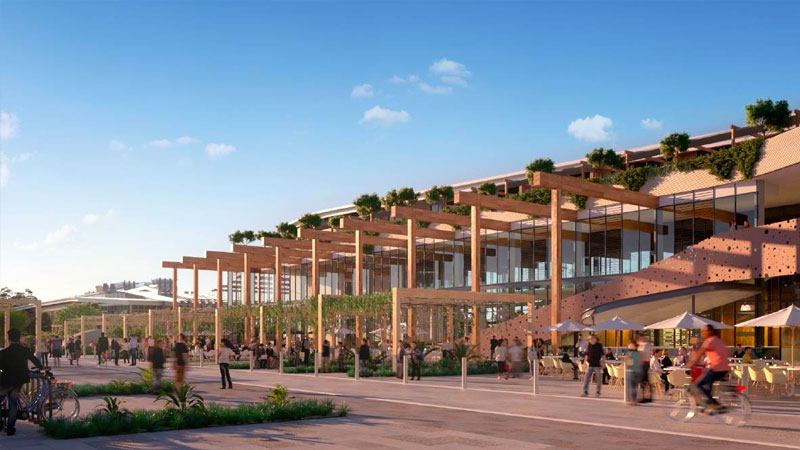
This precinct will create opportunities for flexible employment development connected to residential communities in the south, Aerotropolis Core, the airport and other centres such as Liverpool CBD.
Desired land uses:
• Small and medium enterprises, creative industries, high technology industries and urban services.
North Luddenham
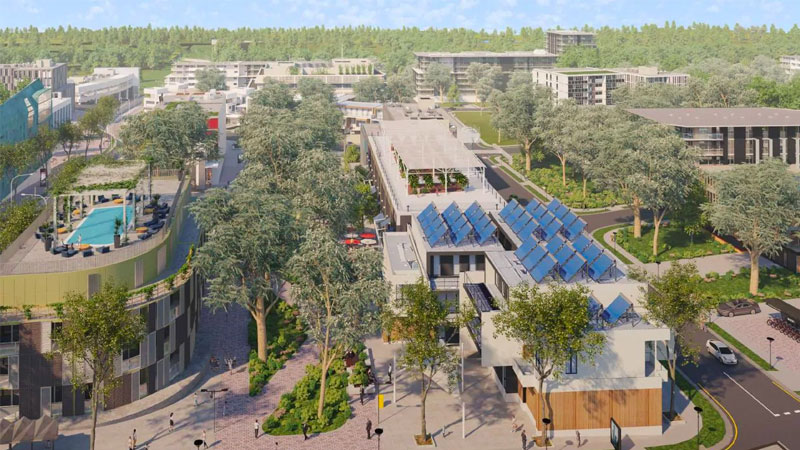
The North Luddenham Precinct will focus on uses such as high technology, research and development associated with food production and processing.
This precinct will leverage its proximity to the Agribusiness and Northern Gateway precincts and the Airport.
Desired land uses:
• High-technology industry, commercial offices, small and medium enterprises, urban services, warehousing and logistics, food technology and research, food production and processing, agribusiness and fresh food produce markets.
Rossmore
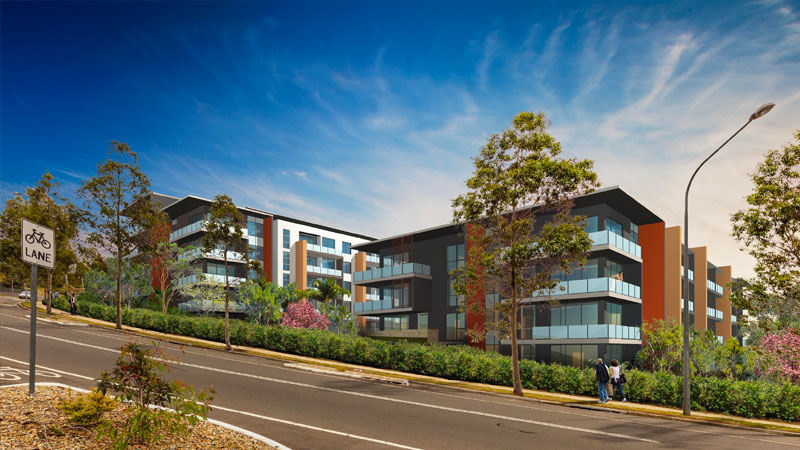
Rossmore will be home to mixed-living communities, nestled within a productive peri-urban landscape, with a diverse range of housing provided to meet changing needs.
Desired land uses:
• Residential, small and medium enterprises, creative industries, high technology industries, urban services, community and cultural facilities, market gardens, local health and education, retail, open space and schools.














